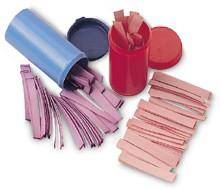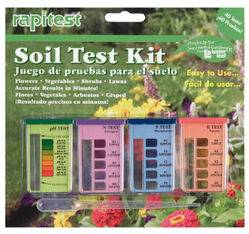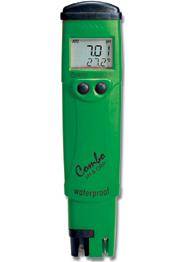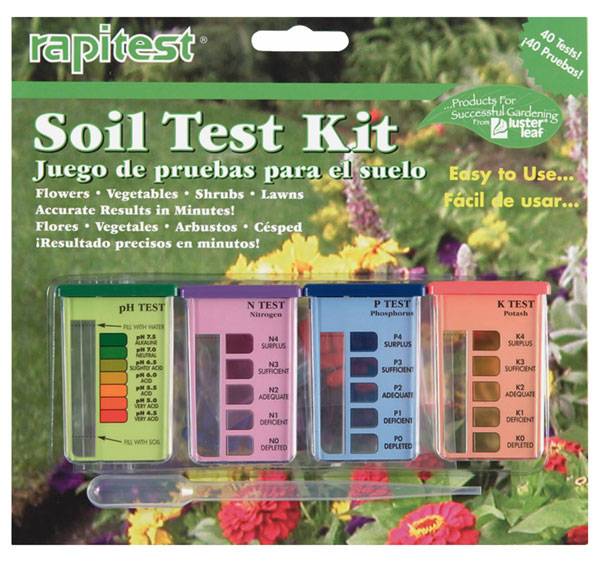Evaluating soil PH
Soil PH is important, you can have all the best fertilisers in the soil but if the PH is far enough off the ideal, the nutrients may not be available to your plants, this is called "Nutrient lockout". Too high or low a PH changes the properties of the nutrients, and makes them unusable by your plants. A good PH helps keep your plants healthy and growing strong, because the nutrients they need are available to them.
The scale for measuring pH runs from 0 to 14, with 7 assigned as neutral. A pH below 7 is acid; a pH above 7 is alkaline.
Here is a link explaining soil PH- Link to Wikpedia explaining soil PH
Marijuana grows in soils with a pH range from 5 to 8.5, but it thrives in nearly neutral soils. A PH of 6.5 to 7.5 is ideal.
Taking a soil sample
The first thing you need is a soil sample to work with, tests run on this sample will tell the tale of your soils potential.
To collect an sample, scrape away the first two inches of soil and dig a hole 6 inches down. Try to take a sample at this depth that contains as little topsoil or litter(leaves, twigs) as possible, take about 2 gallons or so of soil. Be sure to label it, so you know which plot it came from. Now head home to run some tests.
If you will be adding organic materials like peat or compost to loosen or otherwise improve your soil texture, you will need to prepare a soil sample for PH testing that has the same ratios of native soils and the organic materials.
A example: You have clay soil that needs texture improvement, you have decided you will be replacing 25% of the soil with Peat moss. Take a 1 cup measure, fill it to 3/4 cup with the native soil sample, now add peat moss until you have 1 cup. Now moisten it, and mix it very well. This will now serve as your soil sample for PH testing.
How to test your soils PH
Litmus paper-

To test your soils PH using Litmus paper you need to make a water sample with the plots soil. Fill a glass jar about 1/3 full with your soil sample, fill the rest with distilled water. Shake the jar vigorously and then allow it to settle out for 24 hours. The clear (or semi-clear) water on top contains your sample.
When a strip of Litmus paper is dipped in your sample, its color will change in shade, in reaction to the PH of your sample. Comparing the color of the PH paper with a chart supplied with it will show your PH.
Litmus paper can be hard to find, places to look: Beer and wine making stores, Drugstores, Healthfood stores, Medical supply, Lab supply, or online.
You need two sets of Litmus, one that reads Acid(4-7), and one that reads alkiline (7-9).
Rapid test soil test kit-

This another good way to test your soil PH, it also comes with tests for the big 3 plant nutrients, Nitrogen, Phosphorus, and Potassium(NPK), which may also come in handy. With this test, you make a sample similar to how I described for the Litmus paper, a chemical dye is added to the water sample in a vial, the dye causes the water to change a certain shade of color, which indicates its PH, the tests for NPK are similar. A chart showing the PH scale with their representitive shades are convenently built into each vile for comparison.
This is the method I personally use. There are other brands available, your local growshop should have them.
Hand held PH meter

These are PH meters like indoor hydro growers use, if you can afford one they are the easiest way to test PH. You use them to test soil the same way you use Litmus paper, by making a sample with your soil and distilled water. Your local grow shop should have them.
Rapidtest PH meter
These meters are frequently found to be inaccurate, and I don't advise using one. Here is alink to a test comparing it to other methods- A comparison of soil PH test kits
Soil PH is important, you can have all the best fertilisers in the soil but if the PH is far enough off the ideal, the nutrients may not be available to your plants, this is called "Nutrient lockout". Too high or low a PH changes the properties of the nutrients, and makes them unusable by your plants. A good PH helps keep your plants healthy and growing strong, because the nutrients they need are available to them.
The scale for measuring pH runs from 0 to 14, with 7 assigned as neutral. A pH below 7 is acid; a pH above 7 is alkaline.
Here is a link explaining soil PH- Link to Wikpedia explaining soil PH
Marijuana grows in soils with a pH range from 5 to 8.5, but it thrives in nearly neutral soils. A PH of 6.5 to 7.5 is ideal.
Taking a soil sample
The first thing you need is a soil sample to work with, tests run on this sample will tell the tale of your soils potential.
To collect an sample, scrape away the first two inches of soil and dig a hole 6 inches down. Try to take a sample at this depth that contains as little topsoil or litter(leaves, twigs) as possible, take about 2 gallons or so of soil. Be sure to label it, so you know which plot it came from. Now head home to run some tests.
If you will be adding organic materials like peat or compost to loosen or otherwise improve your soil texture, you will need to prepare a soil sample for PH testing that has the same ratios of native soils and the organic materials.
A example: You have clay soil that needs texture improvement, you have decided you will be replacing 25% of the soil with Peat moss. Take a 1 cup measure, fill it to 3/4 cup with the native soil sample, now add peat moss until you have 1 cup. Now moisten it, and mix it very well. This will now serve as your soil sample for PH testing.
How to test your soils PH
Litmus paper-
To test your soils PH using Litmus paper you need to make a water sample with the plots soil. Fill a glass jar about 1/3 full with your soil sample, fill the rest with distilled water. Shake the jar vigorously and then allow it to settle out for 24 hours. The clear (or semi-clear) water on top contains your sample.
When a strip of Litmus paper is dipped in your sample, its color will change in shade, in reaction to the PH of your sample. Comparing the color of the PH paper with a chart supplied with it will show your PH.
Litmus paper can be hard to find, places to look: Beer and wine making stores, Drugstores, Healthfood stores, Medical supply, Lab supply, or online.
You need two sets of Litmus, one that reads Acid(4-7), and one that reads alkiline (7-9).
Rapid test soil test kit-

This another good way to test your soil PH, it also comes with tests for the big 3 plant nutrients, Nitrogen, Phosphorus, and Potassium(NPK), which may also come in handy. With this test, you make a sample similar to how I described for the Litmus paper, a chemical dye is added to the water sample in a vial, the dye causes the water to change a certain shade of color, which indicates its PH, the tests for NPK are similar. A chart showing the PH scale with their representitive shades are convenently built into each vile for comparison.
This is the method I personally use. There are other brands available, your local growshop should have them.
Hand held PH meter
These are PH meters like indoor hydro growers use, if you can afford one they are the easiest way to test PH. You use them to test soil the same way you use Litmus paper, by making a sample with your soil and distilled water. Your local grow shop should have them.
Rapidtest PH meter
These meters are frequently found to be inaccurate, and I don't advise using one. Here is alink to a test comparing it to other methods- A comparison of soil PH test kits
Last edited:




 You are learning from one of the best in my opinion.
You are learning from one of the best in my opinion.


 haha anyways i got my outdoor plot cleaneed up and my gorgeous alibis and cascadias are all a couple inches tall
haha anyways i got my outdoor plot cleaneed up and my gorgeous alibis and cascadias are all a couple inches tall
